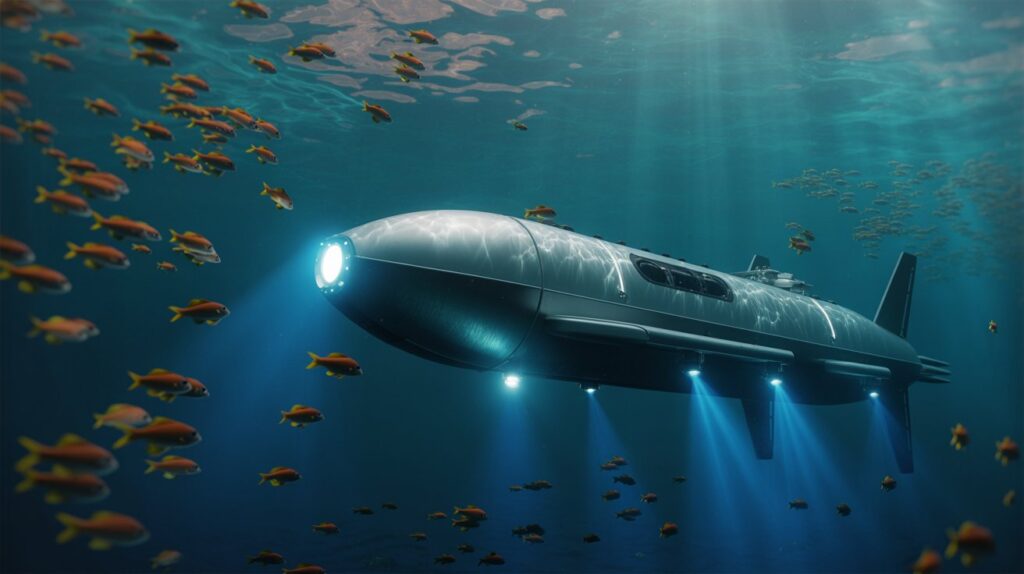The ocean, vast and largely unexplored, holds untapped potential for scientific, commercial, and defense applications. At the forefront of this new marine frontier are Unmanned Underwater Vehicles (UUVs)—autonomous and remotely operated systems that are transforming how we interact with and understand the underwater world.
According to the comprehensive report, the global UUV market is poised for explosive growth. Valued at USD 4.8 billion in 2024, the market is expected to reach USD 11.1 billion by 2030, expanding at a CAGR of 15.0%.

Download PDF Brochure @
https://www.marketsandmarkets.com/pdfdownloadNew.asp?id=140710720
What’s Driving the Market?
1. Technological Advancements
Breakthroughs in underwater navigation, power systems, and sensor miniaturization are rapidly improving UUV capabilities. Modern UUVs can operate at greater depths, with longer endurance and enhanced autonomy—opening new applications in both harsh and sensitive marine environments.
2. Rising Defense Investments
Increased naval spending globally is accelerating the deployment of UUVs for surveillance, mine countermeasures, and intelligence-gathering. Nations are prioritizing unmanned solutions to safeguard territorial waters and enhance strategic underwater dominance.
3. Commercial Sector Expansion
The offshore oil & gas industry, subsea infrastructure operators, and marine researchers are embracing UUVs to cut costs, reduce human risk, and increase the frequency and precision of subsea tasks.
Key Market Segments: ROVs and AUVs Lead with Specialized Capabilities
🔧 ROV Systems: Propulsion Takes Center Stage
Within ROVs, the Propulsion systems segment is projected to dominate the market from 2024 to 2030. This growth is attributed to:
- High-efficiency thrusters enabling precise maneuverability
- Next-gen batteries like lithium-ion and solid-state for extended underwater endurance
- AI-driven control systems allowing for smoother navigation and energy optimization
These propulsion systems are particularly valuable in offshore drilling, construction inspection, and deep-sea repairs.
🎯 AUV Systems: Payloads Powering Performance
For AUVs, the Payloads segment is set to lead, driven by:
- Advanced sonar and imaging systems for high-resolution seafloor mapping
- Environmental sensors used in marine biodiversity monitoring and water quality assessment
- Sensor fusion technologies enabling multi-dimensional data collection in real-time
These systems support autonomous missions in remote or hazardous locations, where traditional human-led operations are not feasible or cost-effective.
Regional Insights: Asia Pacific Emerges as the Growth Leader
The Asia Pacific region is anticipated to account for the largest market share by 2030, driven by:
- Heightened demand for subsea surveillance amid regional maritime disputes
- Strong government investments in offshore energy exploration and maritime research
- Growth of coastal infrastructure projects in economies like China, India, South Korea, and Australia
This growth is also underpinned by national initiatives to modernize naval capabilities and improve disaster response in coastal areas.
Key Players Shaping the UUV Market Landscape
A few globally recognized players dominate the competitive landscape, each leveraging innovation and scale to meet growing global demand:
- Kongsberg Gruppen (Norway) – Offers a wide portfolio of underwater robotics and marine systems
- Saab AB (Sweden) – Known for its advanced defense-grade AUVs like the Sabertooth and Sea Wasp
- Boeing (US) – Developer of the Echo Voyager, a long-range AUV for strategic military applications
- Oceaneering International, Inc. (US) – Provides extensive ROV solutions for offshore oil and gas operations
- Fugro (Netherlands) – Specializes in geophysical and geotechnical data collection using UUVs
These companies are heavily investing in AI, modular UUV platforms, and deep-water autonomy to gain competitive advantages.
Future Outlook: Opportunities Beneath the Surface
The next decade will be pivotal for the UUV market, with vast opportunities for innovation, deployment, and cross-sector integration. Key future trends include:
🌊 Autonomous Swarm Technologies
Multiple AUVs working together as a coordinated swarm can complete large-area mapping or search-and-rescue missions faster and more efficiently.
🔋 Next-Gen Power Systems
Advancements in fuel cells and ocean thermal energy conversion could radically improve UUV mission range and longevity.
🧠 Edge Computing & AI
UUVs will increasingly make real-time decisions underwater without requiring constant communication with surface vessels, enabling more autonomous operations.
🤝 Public-Private Partnerships
Collaboration between governments, universities, and private tech firms will accelerate marine research, climate monitoring, and disaster response via UUVs.
📊 Data-Driven Business Models
Companies are beginning to explore “UUV-as-a-service” or “Subsea Data-as-a-Service” offerings—providing clients with actionable data without the burden of owning or maintaining vehicles.
Ask for Sample Report @
https://www.marketsandmarkets.com/requestsampleNew.asp?id=140710720
The global Unmanned Underwater Vehicles market is navigating into a new era—one where smarter, faster, and more capable robotic systems unlock the mysteries of the deep. With robust investments, rising demand across verticals, and constant innovation, UUVs are no longer niche tools—they are becoming essential assets for governments, industries, and researchers worldwide.

